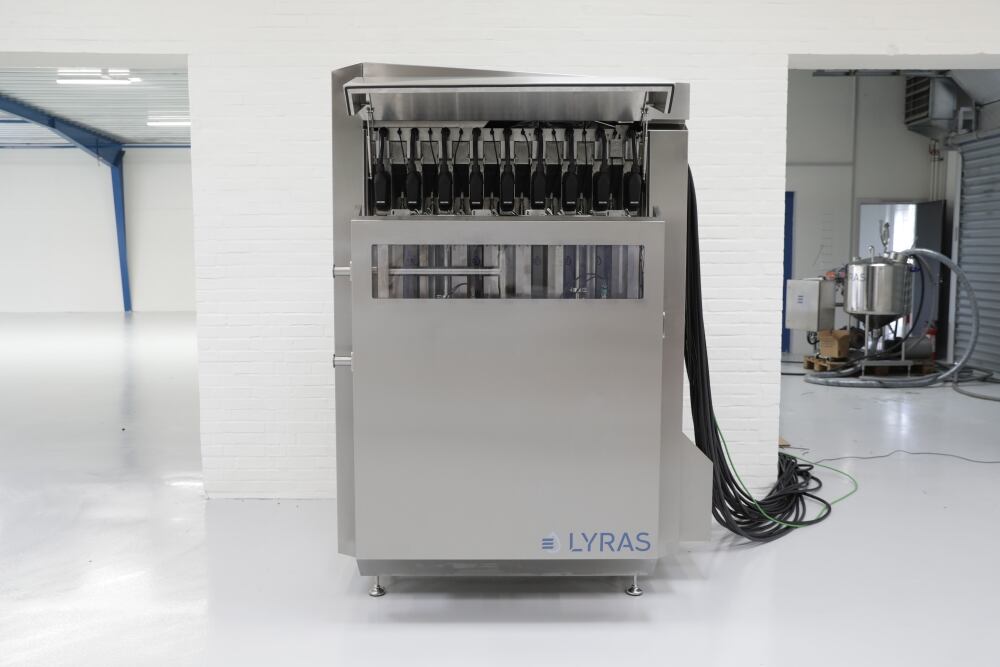Lyras’ technology inactivates bacteria and spores in liquid food by using a technique called raslysation, which is based on UV-light. Lyras said the technology reduces energy usage by up to 90% and water usage by up to 60% compared to traditional pasteurization. It conserves the natural nutrition, structure, and taste of the food due to the treatment.
The new technology applies UV-light combined with a light filter, which concentrates a specific wavelength. The liquid is then led through coils in a controlled flow ensuring the entire volume is exposed to the light. The technique can also be applied to juice, wine, beer and many other liquids.
Lyras’ technology for inactivating bacteria and spores using UV-light was initially called cold pasteurization. But the company said as cold and pasteurization are contradictory, the technology was renamed raslysation: the first three letters in the name Rasmus Mortensen, the inventor of the technology, combined with the word lys, the Danish word for light.
“The ability to manufacture lactoferrin without a form of heat denaturation will be unique within the marketplace. By not subjecting the lactoferrin to a HTST process will provide Beston with a lactoferrin product that is in its most natural state, thereby improving the bioavailability and purity of the final product which would make an ideal ingredient for health supplements and pharmaceutical applications,” said Tina Li, CCO, Beston Global Food Company.
The market for lactoferrin has grown in recent years due to scientific research indicating health benefits related to the protein. Studies have shown lactoferrin complements the human immune system with anti-microbic, antioxidant and anti-carcinogenic properties. This has led to an increase in the use of lactoferrin in infant formula dietary supplements, foods and cosmetics.
“Lactoferrin is very heat sensitive losing approximately a third of its activity when heated. For this reason, it is a huge advantage to use our technology, raslysation, instead of traditional pasteurization. We have other companies showing a lot of interest in this product all around the world as well as in Asia and Oceania,” said Leif Brandt Iversen, senior sales manager at Lyras.

“Beston will continue to work with world leading technology suppliers to develop and market the next generation of lactoferrin products which will be a significant step forward on the current products within the marketplace,” Darren Flew, CEO of Beston Global Food Company said.
Lactoferrin is a natural iron-binding protein. It is found naturally in cow milk and in human breast-milk, especially in the first raw milk. The main purpose of lactoferrin is to bind and transport iron in the body. But the protein also has a role in fighting bacteria and virus infections.
The lactoferrin-protein can be extracted from regular cow milk, but one liter only provides such a small amount. Lyras said the cost is around €1,000 per kilogram.
Lactoferrin has a delicate pink color and was discovered in 1939. Two thirds of all lactoferrin produced is used in infant formula, and the rest is used for dietary supplements for athletes.

